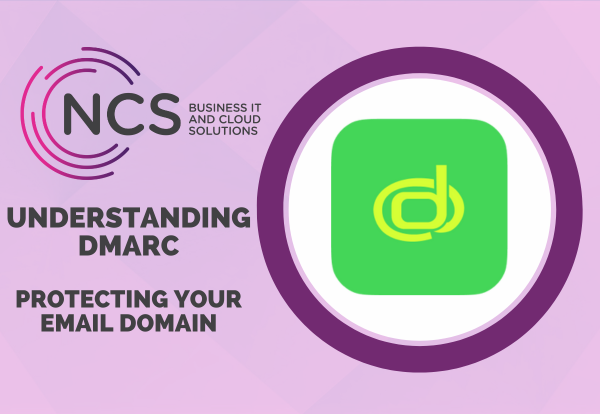Understanding DMARC: Protecting Your Email Domain
This week we’re talking about DMARC (Domain-based Message Authentication Reporting and Conformance) – what it is and why your business needs it.
With DMARC you can tell the world how to handle emails that fail authentication checks, ensuring they are either quarantined or rejected.
This process helps prevent phishing attacks and business email compromise, enhancing the overall security of your communications.
By having DMARC in place, domain owners large and small can fight business email compromise, phishing and spoofing.
The video below explains how it works:
Why do we need DMARC for email?
Email is involved in more than 90% of all network attacks and without DMARC, it can be hard to tell if an email is real or fake.
DMARC allows domain owners to protect their domain(s) from unauthorised use by fighting phishing, spoofing, CEO fraud, and Business Email Compromise.
By always sending DMARC compliant email, the operator of an Internet domain can tell the world “everything I send is easy to identify using DMARC—feel free to drop fake email that pretends to be me.”
Benefits of DMARC
- Email Fraud – DMARC provides visibility of how a domain is used and prevents unauthorised senders from sending email on behalf of an organisation via phishing and email scams.
- Email Reliability – organisations need email to be reliable. DMARC is the foundation for reliable email delivery, and is often the first step taken to resolve email delivery issues.
- Improved Deliverability – by ensuring that only authenticated emails are sent from your domain, DMARC can improve the deliverability of legitimate messages and your sender reputation significantly. Lots of marketing email providers, such as Mailchimp, now recommend DMARC as best practice when using their products.
- Compliance – industries, governments, and regulators are increasingly requiring DMARC to be in place. From April 2025, DMARC changed from being best practice for PCI DSS (Payment Card Industry Data Security Standard) compliance to an essential requirement. It is also becoming a requirement for many cybersecurity insurance providers.
- Visibility and Reporting – DMARC provides detailed reports on email authentication, giving your IT provider insights into potential threats which can help to fine-tune your email security.
Conclusion
DMARC is a powerful tool for protecting your email domain from spoofing and phishing attacks. By implementing DMARC, you can enhance your email security, improve deliverability, and gain valuable insights into your email traffic.
To start securing your domain today and ensure that your communications remain trustworthy and reliable, please get in touch >
Posted in News

